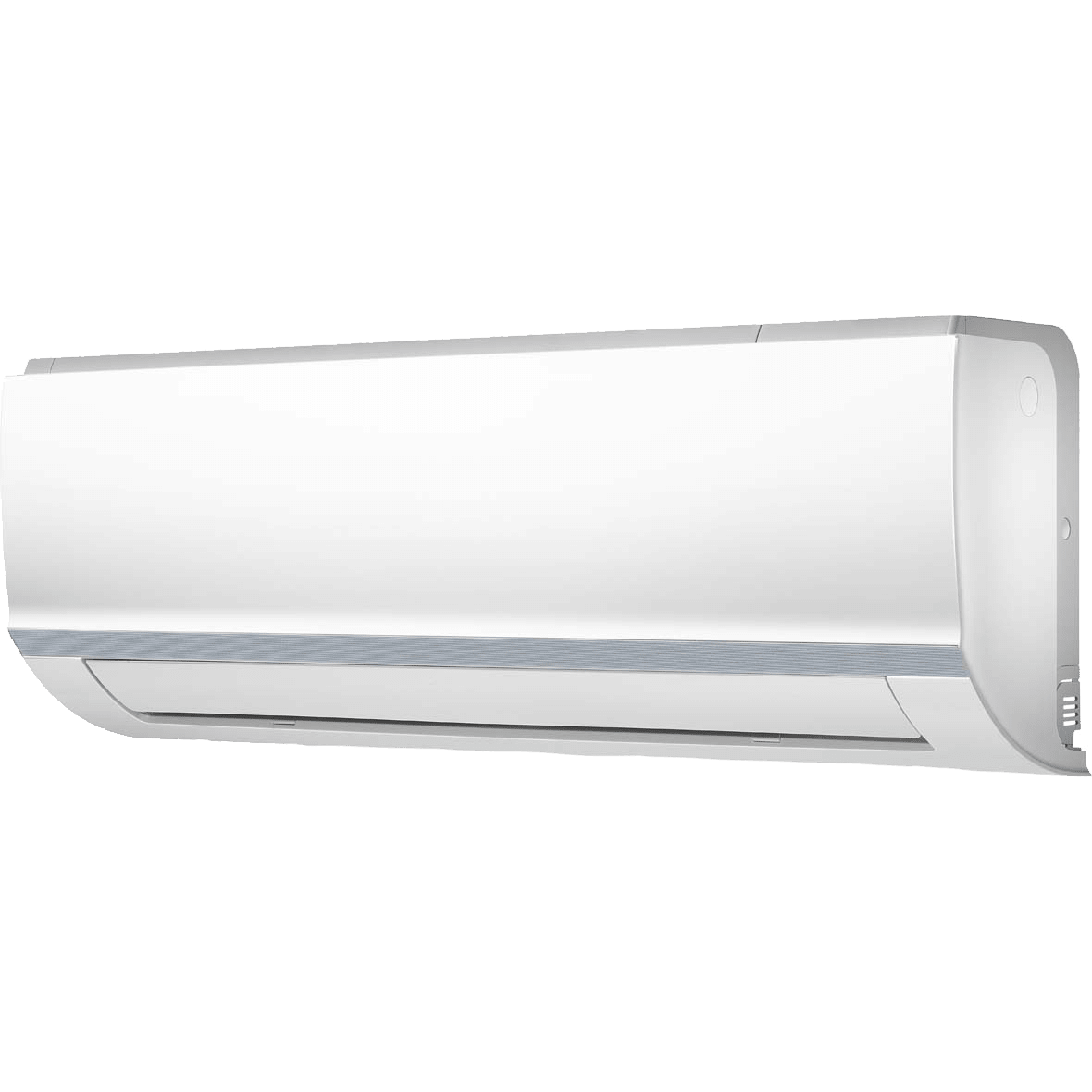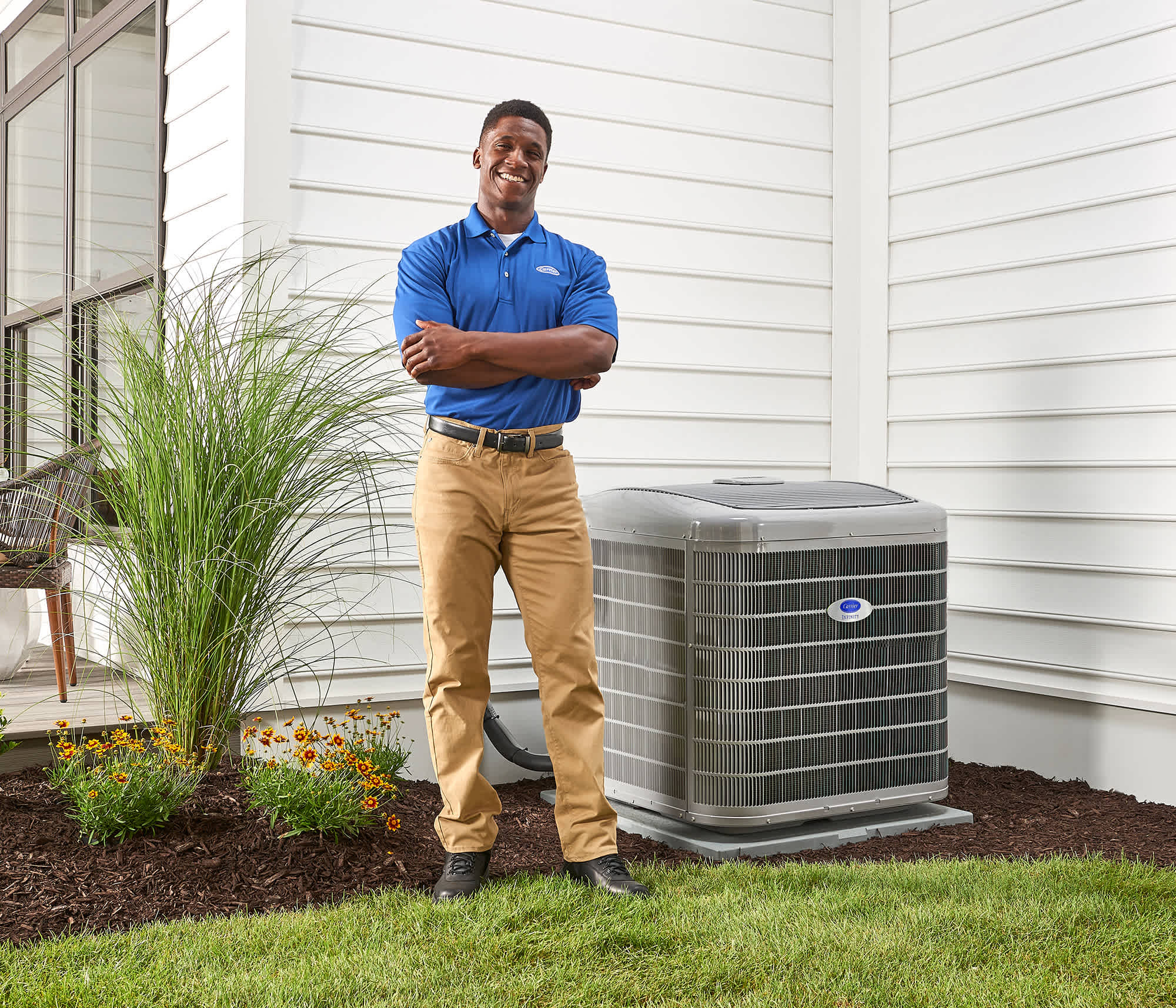
Climatiseurs et thermopompes sans conduits
Les climatiseurs sans conduits et les thermopompes sans conduits, aussi appelés mini-systèmes biblocs sans conduits, peuvent convenir à tous les espaces, même lorsque les appareils de CVC traditionnels n'y parviennent pas. Grâce à leurs configurations pratiquement infinies, les climatiseurs et les thermopompes sans conduits assurent le confort avec un impact visuel minimal. Les systèmes sans conduits sont différents des systèmes biblocs traditionnels, car ils sont offerts dans toutes les formes et toutes les dimensions, et ne nécessitent pas de conduits à l'intérieur de vos murs. Ces solutions sont flexibles et fonctionnent partout où vous en avez besoin.
Système à une zone avec cote SEER2 allant jusqu’à 28.5 et cote HSPF2 allant jusqu’à 18 pour des économies d’énergie optimales.

Module intérieur à montage en hauteur extrêmement silencieux compatible avec certains systèmes sans conduits à une ou plusieurs zones.

Système à une zone avec cote SEER2 allant jusqu’à 28,1 et cote HSPF2 allant jusqu’à 12.4 pour des économies d’énergie optimales.




Il s'harmonise avec votre espace de plafond pour offrir un confort silencieux et il est compatible avec les systèmes sans conduits à une ou plusieurs zones.

Cette cassette de plafond encastrée est conçue pour s’intégrer parfaitement à votre espace de plafond.

Notre module intérieur avec conduit hautement statique est conçu pour être compatible avec les systèmes sans conduit à une ou plusieurs zones.

Notre module intérieur à conduit est compatible avec les systèmes sans conduits à une ou plusieurs zones.

Notre module intérieur de console au plancher est compatible avec les systèmes sans conduits à une ou plusieurs zones.

Notre module intérieur à console au plancher est compatible avec les systèmes sans conduits à une ou plusieurs zones.

Conçu pour une installation murale en hauteur et compatible avec les systèmes sans conduits à une ou plusieurs zones.


Conçu pour une installation murale en hauteur et compatible avec les thermopompes sans conduits à une ou plusieurs zones.

Conçu pour une installation murale en hauteur et compatible avec les climatiseurs sans conduits à une zone.






Les mini-systèmes biblocs sans conduits peuvent être configurés avec un ou plusieurs appareils intérieurs alimentés par une seule unité extérieure à vitesse variable et contrôlée par un onduleur, afin d'obtenir le confort partout dans la maison, y compris les pièces ajoutées, les solariums et les garages. Le compresseur à onduleur assure un confort maximal en toute saison en réglant continuellement les capacités de chauffage et de climatisation pour répondre à vos besoins particuliers.
Puisqu'il n'y a pas de conduits, l'installation est un jeu d'enfant : il n'est pas nécessaire de percer, de réparer ou de repeindre des murs! De plus, l'unité extérieure alimente les appareils intérieurs : vous n'avez donc pas besoin de câblage supplémentaire.
Les maisons plus anciennes n'ont pas été construites pour prendre en charge les conduits des systèmes de climatisation modernes standard. Grâce à un système sans conduits, vous pouvez préserver l'intégrité de l'architecture de votre maison sans avoir à ménager de l'espace pour les conduits et les évents.
En choisissant des pièces particulières à chauffer ou à rafraîchir, vous concentrez la consommation d'énergie dans les zones que vous choisissez. De plus, les systèmes sans conduits peuvent compenser la perte d'énergie des maisons plus anciennes en ajustant continuellement les capacités de chauffage et de climatisation pour qu'elles correspondent le mieux aux conditions actuelles.

What Is a Ductless Mini Split System?
A ductless mini split system is a heating and cooling system that requires no ductwork; it’s a split system because there is a separate indoor air handling unit and outdoor unit; and it’s mini because the units are smaller than a typical central air system.
Learn more about what a ductless mini split is.
Qu'est-ce qu'un mini-système bibloc sans conduits?
Examinez de plus près la question et vous trouverez la réponse. C'est un système sans conduits parce qu'il s'agit d'un système de chauffage et de climatisation qui ne nécessite pas de conduits; c'est un système bibloc parce qu'il comporte des unités intérieures et extérieures séparées; et c'est un mini-système parce que les unités sont plus petites qu'un système d'air central typique. Une autre réponse à la question « Qu'est-ce qu'un climatiseur sans conduits? » est qu'il s'agit du système de CVAC le plus polyvalent et facile à installer, qui assure le confort là où un système d'air central standard ne peut pas le faire.
Applications populaires de CVAC sans conduits
Les mini-systèmes biblocs sans conduits sont un peu le canif suisse du confort : ils font pratiquement tout. L'idéal pour les ajouts de pièce, les conversions d'espace comme un grenier ou un garage, pour donner un coup de pouce à une pièce qui est toujours trop chaude ou trop froide, ou pour assurer le confort d'une zone ou un contrôle séparé de la température dans plusieurs endroits. Dans le cadre d'un nouveau système domestique ou pour offrir des options de climatisation pour les maisons plus anciennes, il existe un système sans conduits qui vous convient.
Technologie de climatiseur sans conduits et de thermopompe sans conduits
Les systèmes biblocs sans conduits Carrier comprennent la technologie à vitesse variable contrôlée par onduleur pour un chauffage et une climatisation plus efficaces. Ces systèmes fonctionnent de la même façon que le régulateur de vitesse de votre voiture. Ils règlent la vitesse du moteur et la capacité de confort à mesure que les conditions changent, produisant des températures constantes et un fonctionnement silencieux, tout en réduisant les factures d'électricité.
Mini-système bibloc sans conduits dans n'importe quel espace, peu importe le budget
Carrier offre une vaste sélection de mini-systèmes biblocs sans conduits qui conviennent à tous les budgets et à tous les besoins, à la maison comme au travail. Avec une gamme complète d'options de la série Infinity, Performance et Comfort, vous trouverez assurément la solution idéale pour garder votre maison confortable. Communiquez avec un concessionnaire local de systèmes de CVAC sans conduits CarrierMD pour obtenir des estimations de prix sur le meilleur système de climatisation sans conduits pour vos besoins.
- Trouvez un entrepreneur en CVAC de Carrier dans votre région
- Apprenez-en plus sur les « applications sans conduits populaires »
- Que sont les « avantages des systèmes sans conduits »?
- Facteurs et variables - « coût d'un climatiseur sans conduits »?

